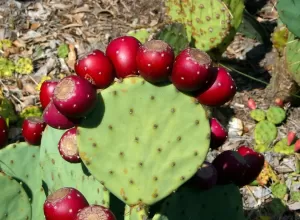|
2022 |
Challenges Inherent in Controlling Prickly Pear Species; Global Review of the Properties of Opuntia stricta, Opuntia ficus-indica and Opuntia monacantha
Opuntia species (prickly pear) were deliberately introduced to many countries around the world for fruit, cochineal dye production, living fencing or as ornamentals. They are now some of the... |
|
|
|
2023 |
Opuntia ficus-indica A review
Opuntia ficus-indica, commonly referred to as prickly pear, belongs to the family Cactaceae.
It is used as both for food and medicine in different countries throughout the world. It... |
|
|
|
2023 |
Meyerozyma caribbica Isolated from Vinasse-Irrigated Sugarcane Plantation Soil: A Promising Yeast for Ethanol and Xylitol Production in Biorefineries
The production of fuels and other industrial products from renewable sources has inten- sified the search for new substrates or for the expansion of the use of substrates already... |
|
|
|
2023 |
Arthrobacter sp. Inoculation Improves Cactus Pear Growth, Quality of Fruits, and Nutraceutical Properties of Cladodes
A study was undertaken to determine the effects of a strain of Arthrobacter sp., a Plant Growth-Promoting Bacteria (PGPB), on plant phenology and qualitative composition of Opuntia ficus-indica (L.)... |
|
|
|
2023 |
Opuntia ficus-indica (prickly pear)
This datasheet on Opuntia ficus-indica covers Identity, Overview, Associated Diseases, Pests or Pathogens, Distribution, Dispersal, Hosts/Species Affected, Diagnosis, Biology & Ecology, Environmental Requirements, Natural Enemies, Impacts, Uses, Prevention/Control, Management,... |
|
|
|
2024 |
Selected Mesoamerican Crops - Anti-Obesity Potential and Health Promotion. A Review
Mesoamerica is the center of origin of a great number of food crops that nowadays are part of a healthy diet. Pre-Columbian civilizations utilized more than 90% of... |
|
|
|
2024 |
Ensiling as a Conservation Technique for Opuntia ficus indica (L.) By-Products: Peel and Pastazzo
Italy is the third largest producer of Opuntia fruits in the world after Mexico and the United States, and 97.72% of these fruits produced by Italy are grown in... |
|
|
